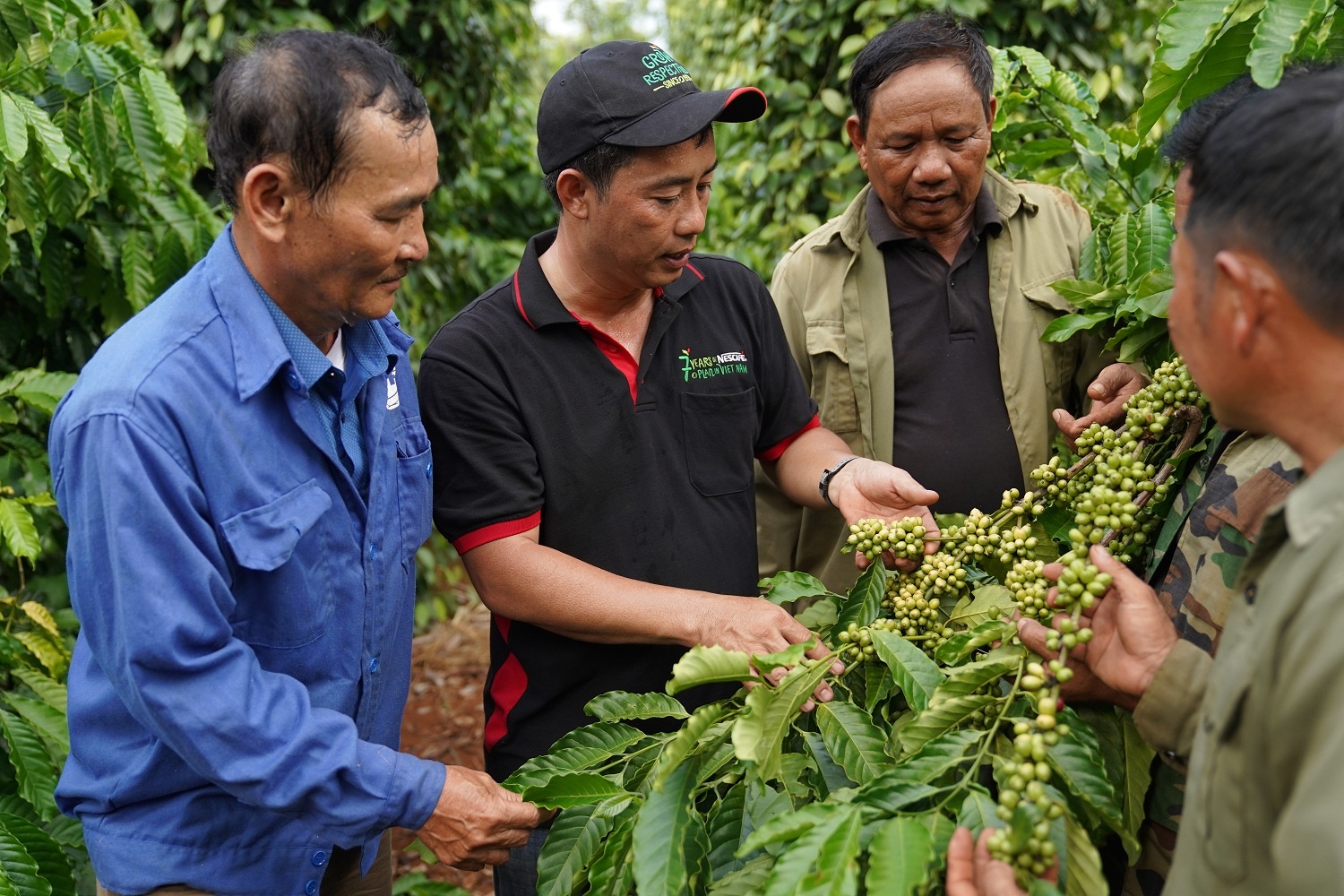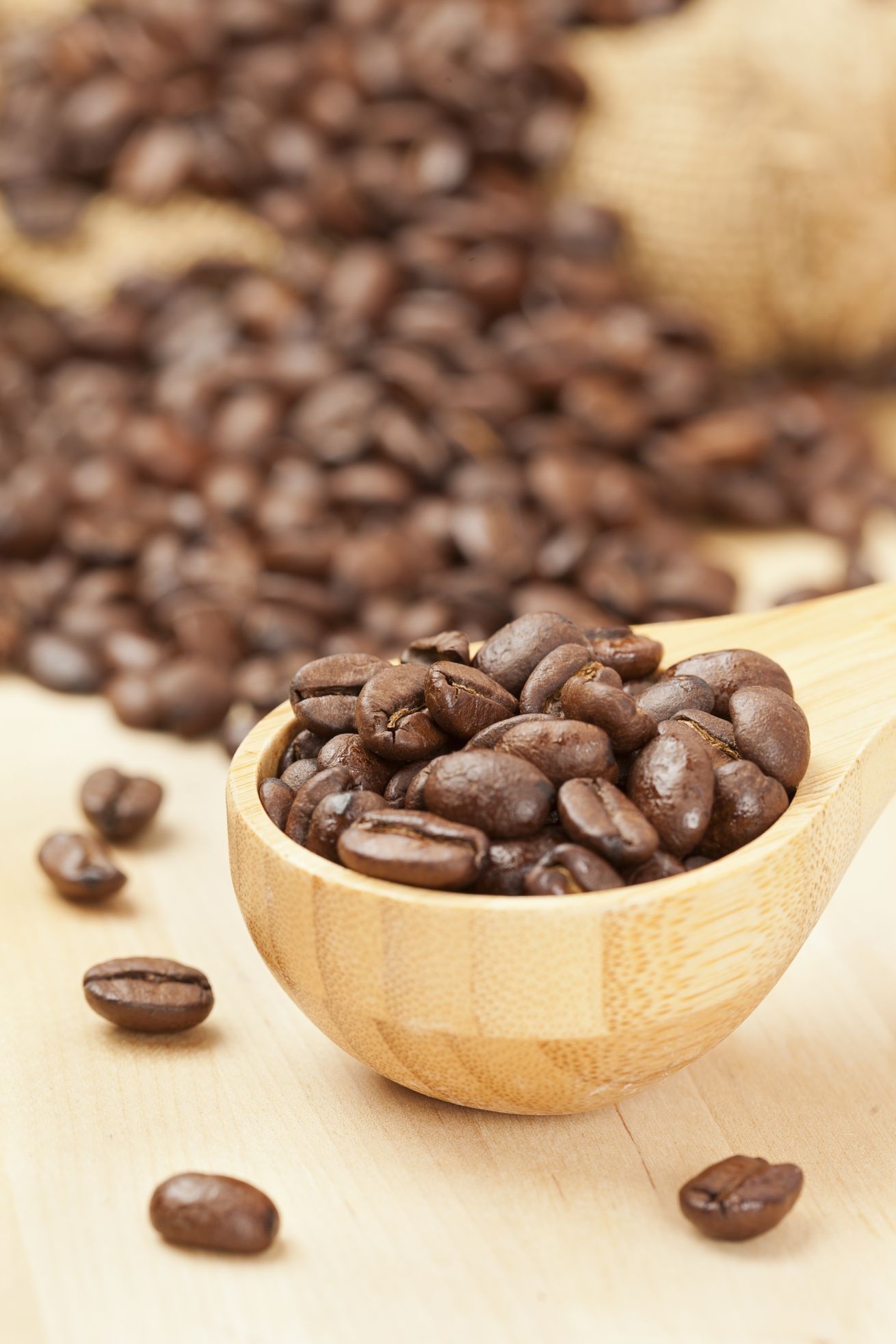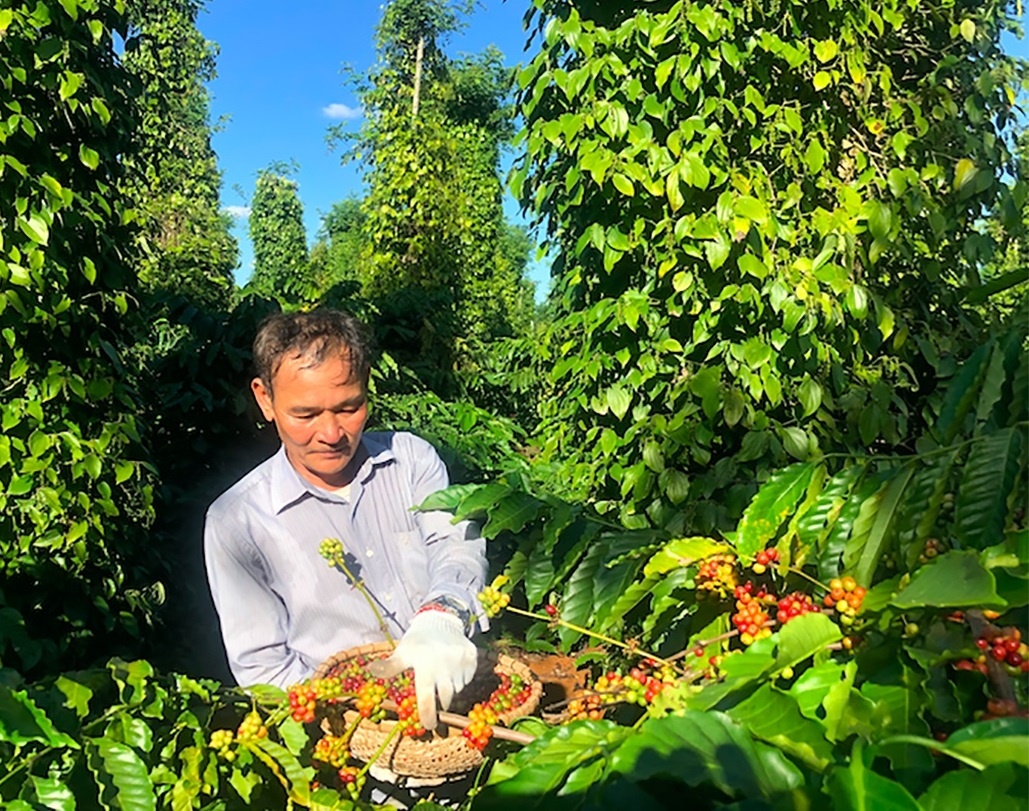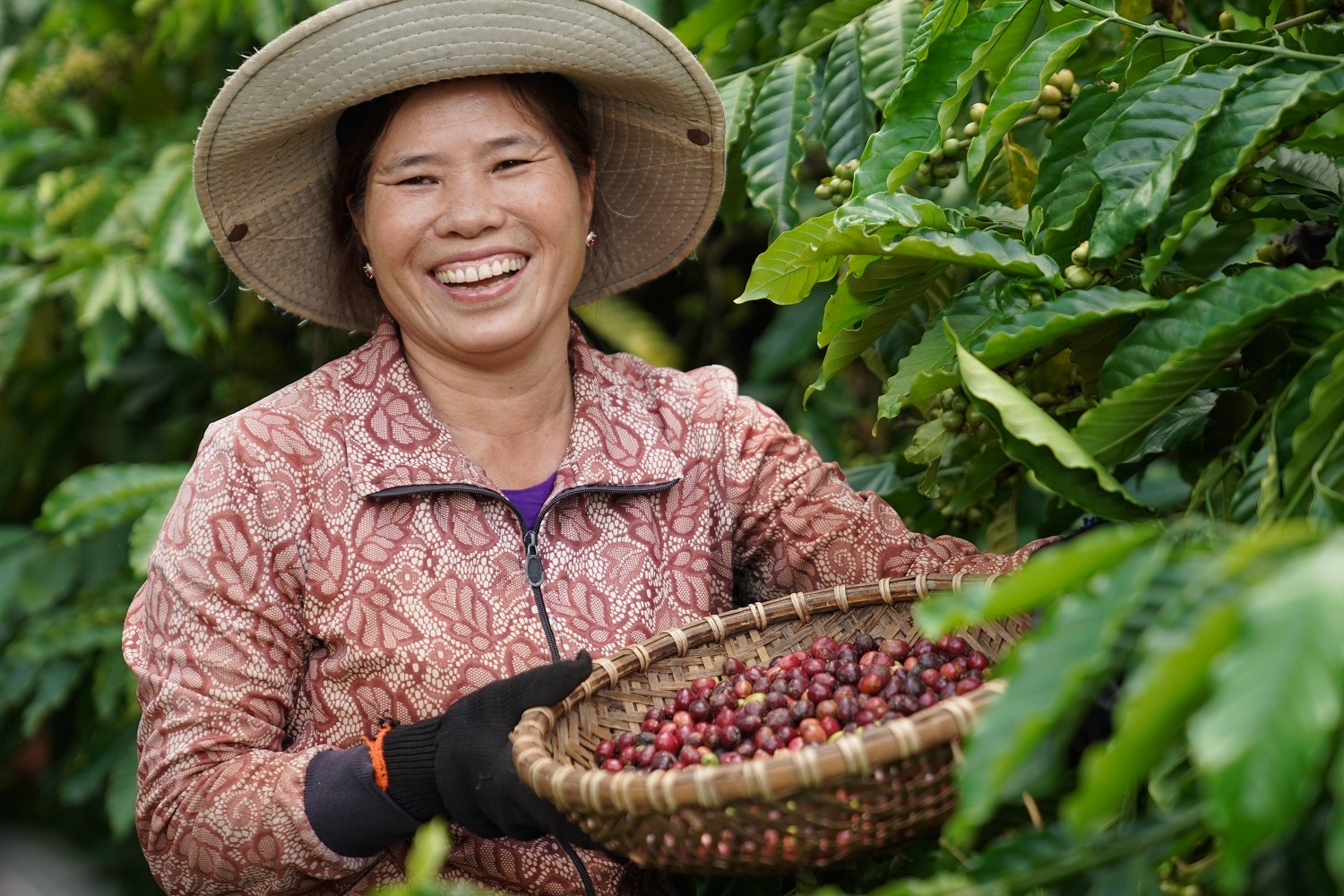Vietnam's F&B experiences renaissance thanks to joint efforts
Mr. Hoang Minh Chien, Deputy Director of Trade Promotion Department, Ministry of Industry and Trade, Ministry of Industry and Trade, said that after 18 years of implementing the program of voting national brands of seven brands, we have witnessed the continuous growth of many domestic enterprises.
By 2018, this had grown to 97, and this year we have registered 124 businesses and their brands.
At the first selection in 2008, we saw only 30 selected companies with their products. By 2018, this had grown to 97, and this year we have registered 124 businesses and their brands.
For example, the national brand recognized enterprise in 2018 achieved revenue of about 907 trillion VND (39.4 billion USD), export turnover reached 130 trillion VND (5.6 billion USD), contributing 85 trillion VND (3.7 billion USD) to the state budget and created 340,000 jobs.
Vu Ba Phu also said that, the Ministry of Industry and Trade has supported businesses in difficulty. After the first months of the health crisis, the domestic market was redefined.
Right from the beginning of the year, following the direction of the Government, the Ministry of Industry and Trade has worked with ministries, branches and localities to implement supply-demand activities across the country to remove difficulties for businesses in production. and distribution.
In addition, to support businesses with high quality brands, we have also been integrating selected brands into national promotions such as the Clean Food Program to vote Vietnamese products for local people.
The integration of such programs has helped grow the domestic market since the beginning of the year, despite the economic consequences of the pandemic. This shows that the communication, promotion and support efforts of the Ministry of Industry and Trade and its agencies so far have been effective.
 |
| Vietnam's F&B experiences renaissance thanks to joint efforts |
Vietnam has strong agricultural production, supported by a sizable area of arable land making up a good fifth of the territory, a full-year growing season, and an abundance of water. Thus, it comes as no surprise that Vietnam leads the production and export of different kinds of F&B. These include vegetables and fruits, dairy products, coffee, beverages, and seafood.
However, the pandemic has been disrupting the global seafood trade, changing the consumption of fishery products. Accordingly, market trends for Vietnam’s main export products also fluctuated, leading to an increase in exports of whiteleg shrimp, marine shrimp, various fish, crabs, and bivalve molluscs, while basa, tuna, squid, and octopus exports have decreased slightly.
Local shrimp supply is forecast to stabilise and recover further towards the end of the year, reaching an output of about 730,000 tonnes, or an increase of 4 per cent on-year. Prices for shrimp exports are also likely to remain stable, yet this could depend heavily on the recovery of major consumption channels. This is because competitive pressure can increase when global shrimp production is forecast to increase again. If the pandemic stays largely under control, Vietnamese shrimp export prices for the rest of the year could see a slight increase of 5 per cent on-year, reaching an average of about $9.60 per kg.
Apart from shrimp, Vietnam is also widely known for its low-cost coffee supply, a substantial competitive advantage. Over the past three decades, coffee has played an important role in Vietnam’s agriculture and economy. The coffee industry has created more than half a million jobs and is the main livelihood of thousands of households. Coffee export value usually accounts for about 15 per cent of total agricultural export turnover, and the share of coffee has always exceeded 10 per cent of agricultural GDP in recent years.
 |
| Coffee has been among Vietnam's strongest F&B export products |
Economic backbone
Like coffee and shrimp, agricultural exports, in general, play a particularly important role in Vietnam’s development, by generating employment, improving the quality of life for its farmers, and promoting social stability.
Leveraging its comparative advantages in this sector, Vietnam has emerged as one of the 19 largest agricultural producers in the world and aims to be among the 15 largest exporters by 2030. In 2020, the agricultural sector had 16 projects on furthering total agricultural, forestry, and aquatic production, with a total investment of about $758 million. The agricultural sector strives to raise the share of processed agricultural products to 30 per cent of the total export value of the industry by 2030.
Likewise, the production value of the F&B industry accounts for 19.1 per cent, the highest proportion of the processing and manufacturing industry in Vietnam, indicating the importance of the industry in ensuring domestic and international demand.
In 2020, fresh food accounted for the largest part of the retail sales in food and beverages, with an estimated sales value of $29.9 billion. In total, food and beverages retail sales were estimated at $51 billion that year. Among these, retail sales of packaged food were estimated at $14.4 billion.
 |
After Vietnam signed several important free trade agreements, the F&B industry opened to a broader consumer and investment market. By 2020, the whole country had over 7,500 industrial-scale agricultural enterprises associated with exports, with a total capacity of about 120 million tonnes of raw materials per year, according to Vietnam’s Ministry of Industry and Trade.
Vietnam’s food processing and drinks industry has seen an average growth of 7 per cent in recent years, and export turnover for these totalled more than $40 billion last year, accumulated from around 200 countries and regions. Also last year, F&B retail sales were estimated at $51 billion, forecast to grow to $66.3 billion by 2023, according to Statista.
Within the F&B sector, the dairy industry reached a total revenue of $4.98 billion in 2020, an increase of about 5 per cent compared to 2019 thanks to the abundant supply of domestic ingredients and increasing demand, as well as the country’s trade promotion activities through modern distribution channels.
Currently, Vietnam’s dairy products are present in many countries and territories in the Middle East and ASEAN. Since 2019, several local enterprises have been exporting dairy products to China. According to the General Department of Customs, in 2020, Vietnam’s dairy exports reached $302.7 million, up 10.5 per cent compared to 2019, exceeding $300 million for the first time.
Regarding the beer market, domestic beer production has met the internal consumption demand, and gradually increased exports. Vietnam is one of the biggest beer markets in the world. In the 2015-2019 period, the industry’s annual average growth rate was 5 per cent. In 2020, the industry produced about 4.4 billion litres of beer. Equatorial Guinea was the largest export market of Vietnam, with about 20 per cent of all beer going there. Beer revenue in 2019 was $7.7 billion, and around $8.2 billion in 2020, with an annual growth rate of 5.5 per cent forecast until 2023.
 |
Back on track
The global economy is expected to recover strongly as confidence, consumption, and trade gradually improve thanks to vaccination efforts around the world. According to the World Bank, after a recession in 2020, global economic growth is expected to increase by 4 per cent by the end of the year.
More developed economies are forecast to recover by 3.3-3.5 in 2021 and 2022. Growth in less developed economies and emerging markets is forecast to reach 5 per cent in 2021. The global F&B market is expected to grow from $5.8 trillion in 2020 to $6.19 trillion in 2021 at a compound annual growth rate (CAGR) of 6.1 per cent.
Asia-Pacific represents the largest region in the global food and beverages market, accounting for 42 per cent in 2020. North America was the second-largest region, accounting for 22 per cent of the global market. Africa accounted for the smallest part of global F&B.
In Vietnam, the Vietnam Value Programme was among several initiatives that pushed growth further. The programme was approved by the prime minister with Decision No.253/2003/QD-TTg from 2003. The Ministry of Industry and Trade has been coordinating with other ministries and agencies to implement the programme.
The Vietnam Value Programme’s objectives are to create an image of a country with a reputation for richness, diversity, and high quality of goods and services. Further, the programme shall enhance the competitiveness of Vietnamese brands in domestic and international markets and promote awareness among local and international distributors and consumers, as well as build up the prestige, pride, and appeal for the land and the people of Vietnam, contributing to the development of tourism and foreign investment.
The selection of products and services is carried out every two years. Companies to be selected to participate in the programme must pursue the three core values quality, innovation, and leadership. The programme is not an award but rather companies are selected as the programme’s partners, which build national brands themselves but are then supported by the programme in furthering the recognition of their brands and services, thereby setting a strong foothold at home and advancing their presence in the global markets.
What the stars mean:
★ Poor ★ ★ Promising ★★★ Good ★★★★ Very good ★★★★★ Exceptional
Related Contents
Latest News
More News
- Hanoi farms over 100 pomelo producing areas (December 05, 2024 | 18:05)
- Vietnam ranks among top three global shrimp exporters (August 07, 2024 | 16:13)
- Unlocking the potential of Vietnamese medicinal herbs (October 05, 2023 | 11:29)
- Hanoi promotes trade, investment, tourism cooperation with central provinces (July 10, 2023 | 09:57)
- VICO Fresh coconut creates buzz at trade show (May 26, 2023 | 20:20)
- Vietnam strengthens green branding (April 20, 2023 | 17:18)
- Increasing trade connectivity between Hanoi and localities (November 24, 2022 | 18:00)
- Vietnam recognises 325 products as national brands (October 26, 2022 | 17:13)
- Brand Finance Forum 2022: Honouring Vietnam’s 50 most valuable brands in 2022 (September 22, 2022 | 09:32)
- Ample opportunities for Vietnamese businesses in trade (May 20, 2022 | 07:00)

 Tag:
Tag:



























 Mobile Version
Mobile Version